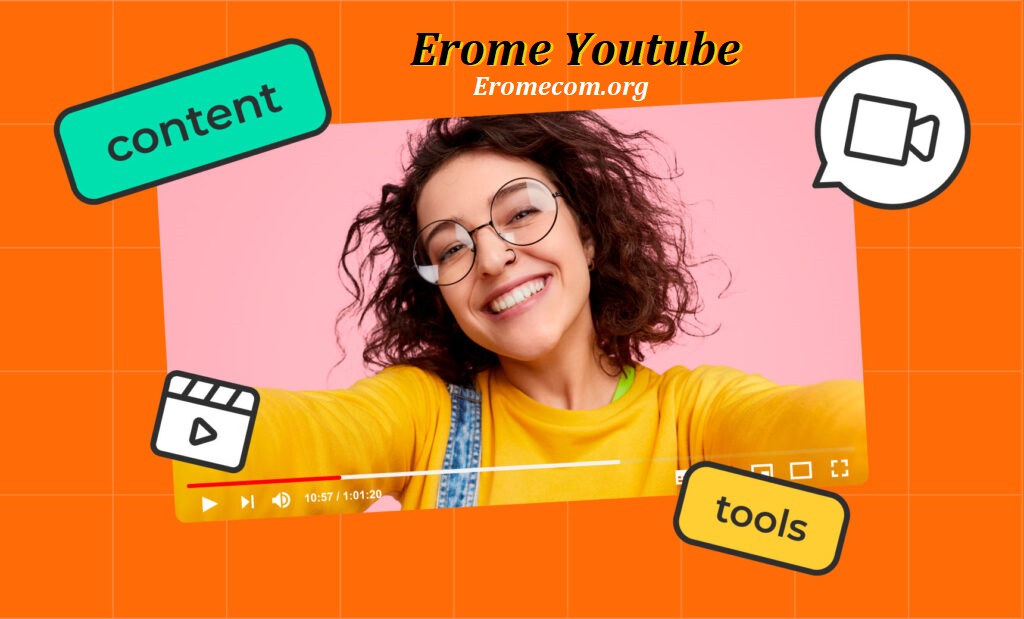In today’s digital era, platforms for sharing content are constantly evolving. Among them, YouTube stands as a giant in the world of video-sharing, with billions of monthly users and a powerful influence on global media culture. But as YouTube tightens its community guidelines and monetization policies, alternative platforms like Youtube Erome are gaining attention—especially from creators whose content doesn’t always fit into YouTube’s boundaries. This article explores the comparison and contrast between Erome YouTube, what sets them apart, and why some creators are turning to Erome for more freedom.
Understanding YouTube’s Platform and Policies
Erome YouTube has revolutionized video content since its launch in 2005. With over 2 billion monthly users, it serves as a global hub for education, entertainment, music, gaming, tutorials, and personal vlogs. However, as it has grown, Erome YouTube has implemented strict rules to ensure the platform remains advertiser-friendly and safe for users of all ages.
Content that is considered violent, explicit, controversial, or even slightly provocative can face demonetization, removal, or shadow-banning. While these policies are in place to protect the community, many creators feel restricted, especially those who produce adult, risqué, or experimental content that does not conform to YouTube’s family-friendly model.
What Is Erome?
Erome is a lesser-known video-sharing website that has gained a niche audience in recent years. It is known for hosting adult content, especially user-generated videos that explore themes not suitable for mainstream platforms. While YouTube censors or bans explicit material, Youtube Erome provides a space with minimal moderation for people to upload and share personal content without fear of takedown.
Unlike mainstream adult sites that often feature professional content, Erome YouTube is popular for its amateur, raw, and real nature. It emphasizes personal freedom of expression—whether in sexuality, alternative lifestyles, or unfiltered creativity.
Erome vs. YouTube: Key Differences
1. Content Moderation
-
YouTube uses a mix of AI and human reviewers to enforce its content rules. Videos flagged for violations are often taken down within minutes.
-
Erome has minimal moderation. As long as content does not involve illegal activities or violates the site’s limited terms, it’s allowed to remain.
2. Audience and Reach
-
YouTube is a global platform with a vast audience, giving creators the opportunity to reach millions of viewers.
-
Erome is niche and has a significantly smaller audience. However, its viewers are often highly engaged and supportive of the platform’s open nature.
3. Monetization
-
YouTube offers multiple monetization streams—ads, memberships, super chats—but only to creators who meet strict eligibility criteria.
-
Erome does not offer direct monetization. Creators often rely on external platforms like Patreon or OnlyFans to earn money from their Eromecom content.
Why Are Some Creators Migrating to Erome?
As Erome YouTube becomes increasingly regulated, many creators feel like their freedom of expression is being stifled. For artists, sex educators, LGBTQ+ influencers, or alternative performers, YouTube’s policies can be a barrier to authentic storytelling.
Erome offers a safe space for boundary-pushing content. While it doesn’t come with the same level of exposure or financial gain as YouTube, it provides something invaluable to many creators: creative freedom without fear of censorship.
For example, creators who produce content related to fetish art, sexual wellness, or NSFW comedy sketches may find Erime a more welcoming environment to share their work.
Challenges of Using Erome
While Erome provides creative freedom, it comes with its own set of challenges:
-
Limited exposure: Without the search engine visibility and user base of YouTube, content may struggle to reach a wider audience.
-
No built-in monetization: Creators must direct their audience to other platforms to earn income.
-
Content perception: Because Erome is often associated with adult content, creators might face social stigma or difficulties promoting their work on mainstream social media.
Is There a Middle Ground?
Some creators are exploring a hybrid approach, where they use YouTube for safe, public-facing content, while directing their loyal audience to Erome (or other platforms) for exclusive or uncensored material. This strategy helps maintain visibility on both platforms while respecting each platform’s limitations.
By combining the reach of YouTube with the freedom of Erome, creators can balance exposure and expression. This also reflects a broader trend in digital content—creators diversifying their platforms to remain in control of their narrative and monetization.
The Bigger Picture: Free Speech, Art, and the Internet
The rise of platforms like youtube Erome raises important questions about free speech, censorship, and the role of tech giants in defining what is acceptable content. Should all platforms be family-friendly? Or should there be space for adult expression, sexual content, and experimental art?
Erome YouTube, in its effort to maintain a safe and advertiser-friendly space, sometimes blurs the line between protecting users and policing creativity. Erome fills a gap left behind, offering a rawer, less filtered digital environment.
This contrast highlights the diversity of internet users’ needs—from safe educational content for kids to uncensored art for adults.
Final Thoughts
“Erome YouTube” as a concept symbolizes the growing divide between platforms that prioritize safety and advertisers (like YouTube) and those that champion freedom and authenticity (like Erome). While both serve different purposes, they also reflect the evolution of internet culture.
In an ideal world, creators wouldn’t have to choose between reach and freedom. But until that balance is found, platforms like Erome will continue to thrive in the shadows of Erome YouTube, offering sanctuary to those who believe creativity shouldn’t be limited by algorithms or ad policies.
Whether you’re a content creator, a curious viewer, or a digital rights advocate, understanding platforms like Erome alongside giants like YouTube is essential in the ever-changing media landscape.


